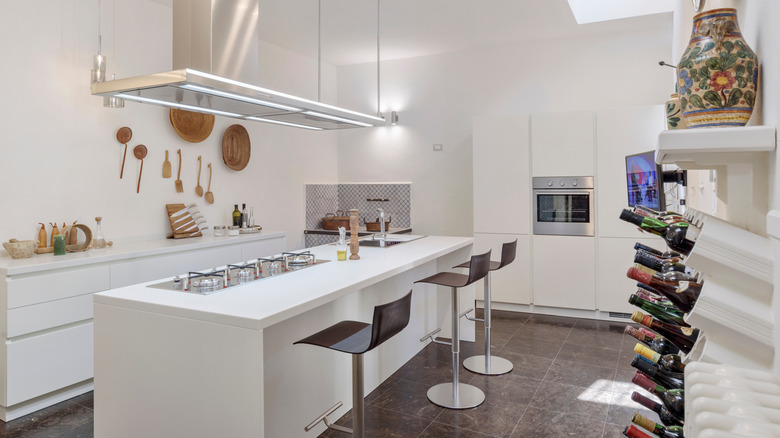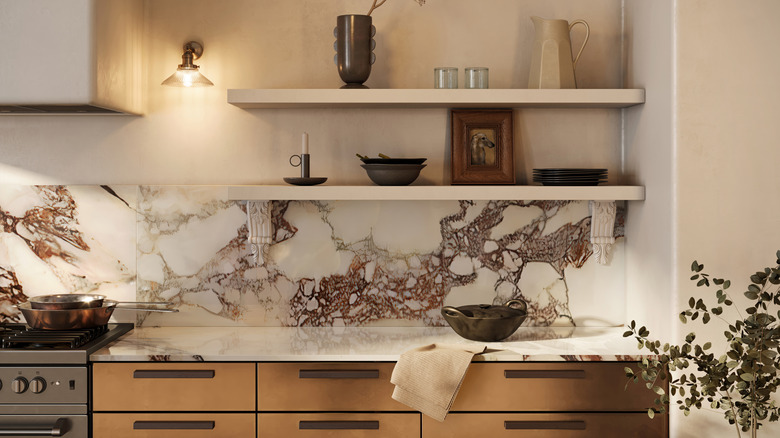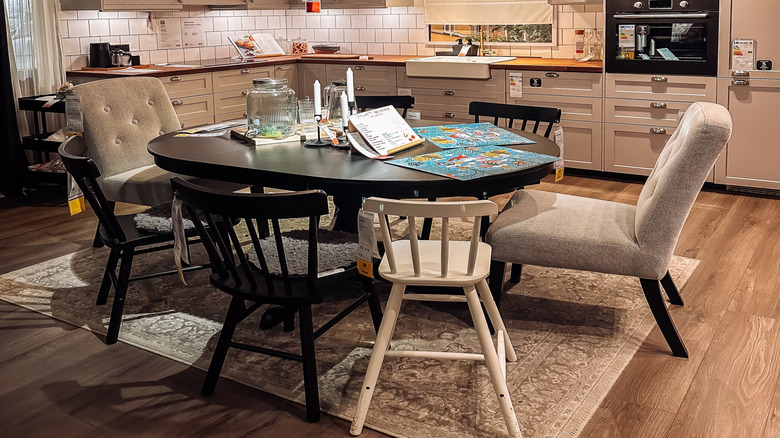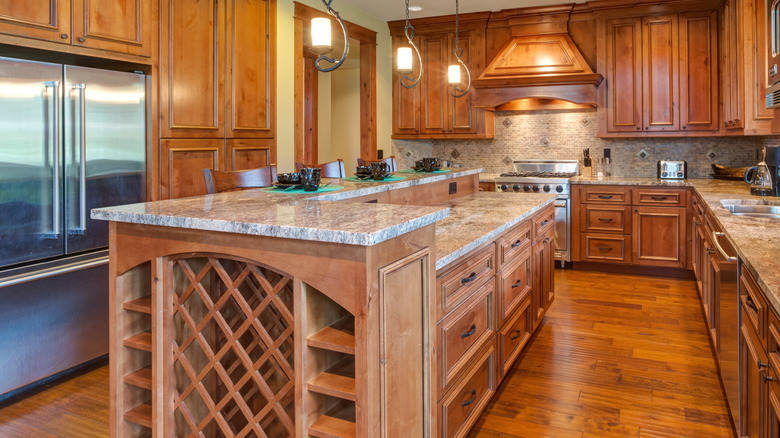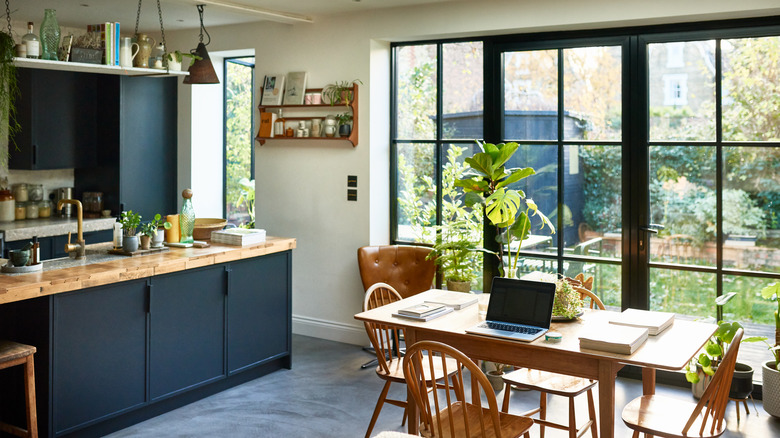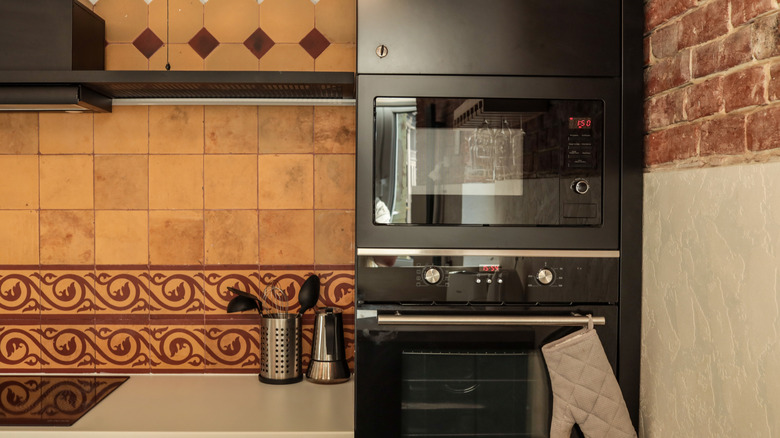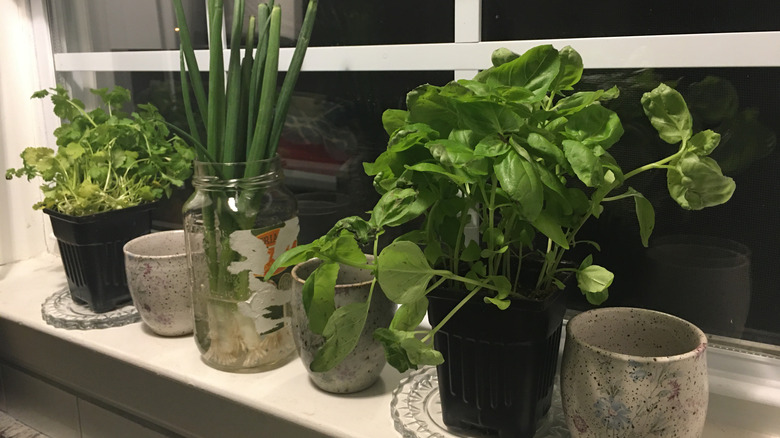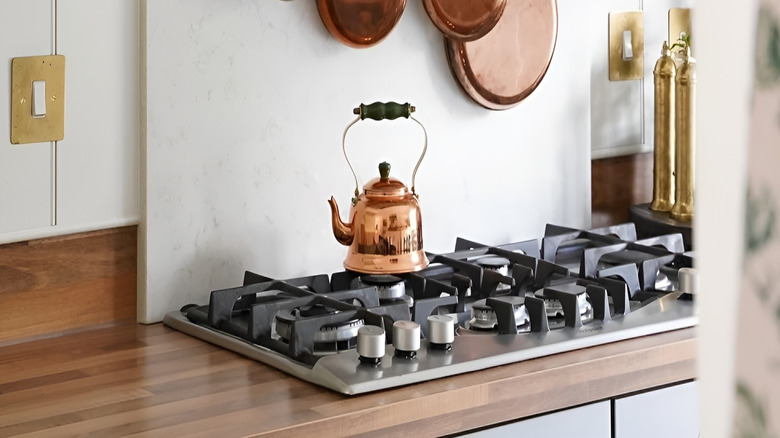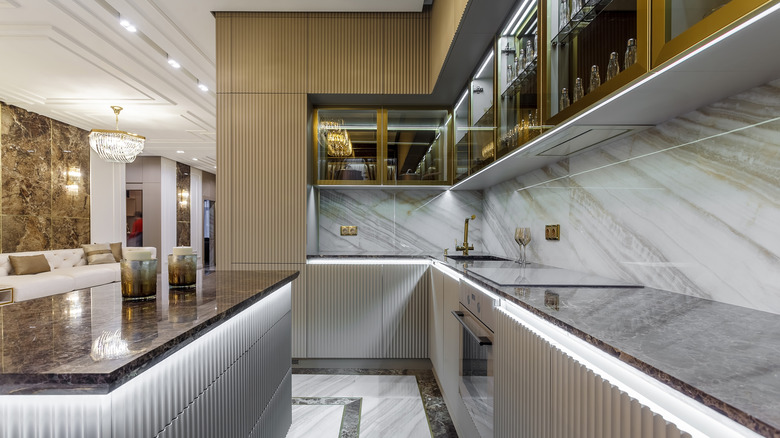10 Italian Kitchen Designs You'll Want To Steal
Italian cooking is celebrated for its unforgettable flavors, and part of that story is the kitchens they're born in. Many major features of Italian kitchen design are not exclusively Italian; however, they all reflect the important things behind this cuisine, as well as the importance of cooking itself in an Italian home.
To create powerful flavors with simple ingredients, Italian cooking thrives on freshness, and Italian kitchens attempt to bring a similarly fresh feeling to the entire room. Expect lots of light, from attractive lighting fixtures as well as large windows with a lot of sun. An open floor plan complements this by adding a certain breeziness to the room and also makes it easier to move around while cooking.
Italian kitchens reflect their environments, and are frequently clad in warm colors that evoke the Italian countryside. Natural materials native (or simply common) to Italy take center stage in both function and design. And don't forget your wine storage either, for cooking, drinking, or both.
1. Open floor plan
The kitchen — la cucina — is traditionally the center of the home in Italian households, and an open floor plan expresses that importance by enabling maximum movement and a chance for family gatherings in and through this busy room.
2. Natural materials
Prominent use of natural stones and woods reflects a connection to the Italian landscape, known for quality hardwoods and fine stonework like Carrara marble. In Italian kitchens, such materials are commonly seen in stone floors, exposed wood ceiling beams, or countertops made of either material. But watch out for the biggest weakness of marble countertops: they're very prone to staining.
3. Elegant detailing
Intricate, often iron accents reflect centuries of Italian craftsmanship and give you a chance to add your own touch. Examples like finely-detailed drawer pulls are a classic Italian kitchen feature, and especially shine with warmer color palettes — which happen to also be one of America's resurgent 90s kitchen trends.
4. Attention-grabbing lighting
Kitchen lighting is essential for seeing what you're cooking and setting the mood, but stylish, noteworthy lighting helps denote the kitchen as the home's most important room. A kitchen chandelier is perfect for this; go ornate for a more vintage feel, or minimalist for a modern Italian kitchen.
5. Built-in wine rack
Who doesn't enjoy a glass of wine? Italian cuisine is serious about wine, and Italian kitchens show this with dedicated wine storage, up to and including wine refrigerators. Wine is an essential ingredient for cooking and hosting, so keep it close at hand — and show your dedication with built-in storage.
6. Natural light
Italian cooking hinges on quality meals made with relatively few simple, fresh ingredients. Natural light further fuels that sense of freshness, and also makes the heart of the home feel more airy and welcoming, whether cooking for one or entertaining a group of guests.
7. Warm colors
Color schemes can vary depending on specific regions of Italy, but often center on warm, earthy colors created by stone. These commonly include soft oranges and yellows, reddish-brown colors like ochre and terracotta, and pops of vibrancy like bright blue.
8. Herb garden
Italian cooking thrives on fresh herbs, and it doesn't get any fresher than growing them yourself right in the kitchen. Don't worry about buying an array of tiny terracotta pots either, you can repurpose old jars for a new herb garden, just fine for a windowsill garden.
9. Hanging pot rack
Displaying your cookware out in the open suggests a rich tradition of cooking, with years of stories and secret recipes. It's a definite rustic touch, but it's also one of the best retro kitchen items that are becoming cool again.
10. Sophisticated cabinetry
Opposite of a rustic hanging pot rack, modern Italian kitchens feature flowing, often minimalistic cabinet designs that blend beauty with functionality. Nearly everything is closed away in a sleek cabinet, reflecting a unified, orderly design vision that goes well with minimalist designs.

